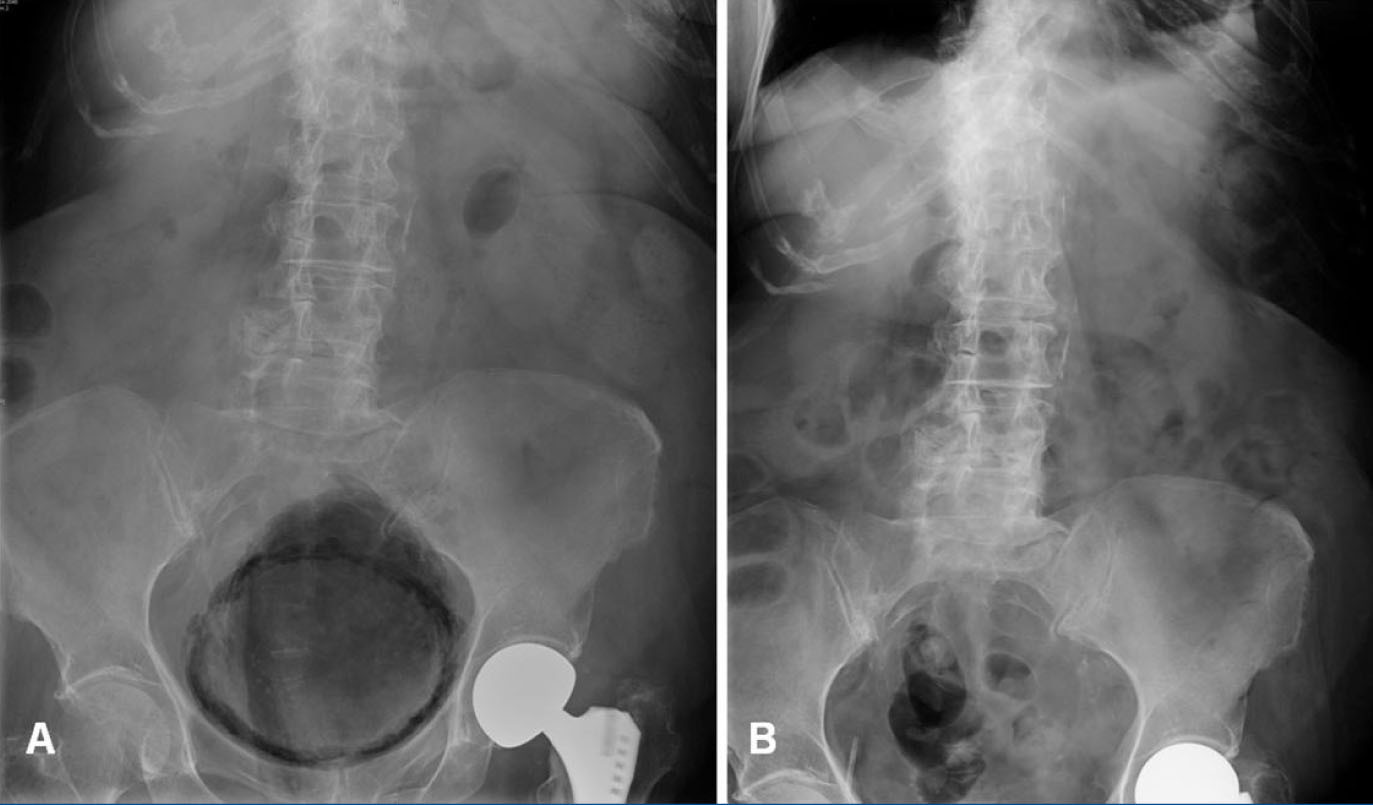To the Editor:
We present the case of an 86-year-old female with a history of poorly controlled type 2 diabetes mellitus, who sought care for an episode of arterial hypotension, fever, dysuria, and acute renal failure in the context of sepsis of a urinary aetiology. Laboratory tests revealed the following values: leukocytes: 27 200x10e3/µl; glucose: 170mg/dl; creatinine: 5.1mg/dl; urea: 217mg/dl; and C-reactive protein: 232mg/l. An abdominal x-ray revealed gas surrounding the urine bladder, indicative of emphysematous cystitis (Figure 1A).
Cultures of tissue samples did not reveal microbiological growth. We started treatment with intravenous hydration, insulin, and antibiotics with meropenem, which, along with catheterisation of the urine bladder, produced an adequate response. The patient recovered after three weeks of antibiotic treatment, with no complications and with normalisation of renal function (Figure 1B).
Emphysematous cystitis is a rare, progressive, and fatal disease if it is not detected early. More than 90% of cases of this disease occur in diabetic and immunodepressed patients. The most commonly involved microorganisms are Escherichia coli and Klebsiella pneumoniae. The mechanism through which gas is produced in emphysematous infections is not well understood. In diabetic patients, one reason could be the production of CO2 by the microorganism through the glucose fermentation pathway, which occurs when glucose concentrations are high. The best diagnostic method is radiological imaging (simple x-ray or computed axial tomography). This potentially fatal and rare complication must be kept in mind during patient diagnosis, especially in elderly diabetic patients with urinary tract infections.
Conservative treatment with antibiotics and catheterisation of the bladder is generally successful, with a rate of complications <20%. This strategy reduces patient mortality without requiring surgical interventions, and aids in preserving renal function.
Conflicts of interest
The authors declare that they have no conflicts of interest related to the contents of this article.
Figure 1. Emphysematous cystitis








